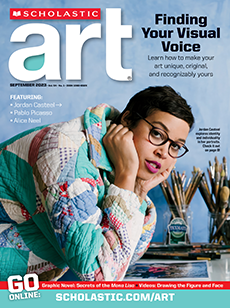Step outside. Breathe deeply. Listen. What do your senses tell you? What is the season? The weather? The time of day? Now imagine you are trying to capture every detail about this experience in an artwork. Can you illustrate the smells, sounds, and even the temperature?
Artists have always tried to depict the natural world. Some aim to capture the beauty they see, while others hope their art will educate people or even inspire change.
Go outside and take a deep breath. Close your eyes and listen. What do you hear, feel, and smell? Now open your eyes. What do you see? Imagine you are trying to share this experience in an artwork. How would you illustrate it? The artists featured on these pages depict the beauty of the natural world in their artwork.
